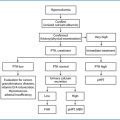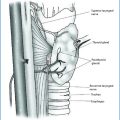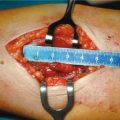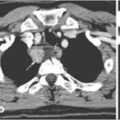© Springer-Verlag Italia 2016
Guido Gasparri, Nicola Palestini and Michele Camandona (eds.)Primary, Secondary and Tertiary HyperparathyroidismUpdates in Surgery10.1007/978-88-470-5758-6_1919. Patient Information for Surgery in Primary and Secondary Hyperparathyroidism
(1)
Department of Surgery, ASL4, Ivrea Hospital, Ivrea, Italy
Parathyroid surgery can have some complications. These are mainly: lesions of recurrent nerves, definitive hypocalcemia, and persistent or recurrent hyperparathyroidism.
The surgeon has a duty to adequately inform the patient regarding: the indications for surgical treatment; possible alternative treatments; the advantages expected from surgical intervention; possible risks (both general, specific complications); possible clinical conditions in the event of permanent postoperative lesions; the required conduct during treatment and convalescence; possible implications in the event of pregnancy in women of reproductive age.
The information should be provided promptly in a simple, clear, complete and comprehensive form [1]. The surgeon will request consent to carry out the surgery only after providing the most complete information, taking into particular consideration any expression of disagreement at all, either on specific aspects of the procedure or on their possible consequences.
It is useful and strongly advisable that this informed consent should be in written format, and even more so in the event of any disagreement or reservation, given the particular characteristics of the treatment (partial or total removal of the parathyroid) and the possible consequences for the total physical wellbeing of the patient. The received consent should be specifically documented in the patient’s medical record.
The Italian Association of Endocrine Surgery Units (U.E.C. CLUB) suggest two consensus forms in parathyroid surgery for primary (Box 19.1) and secondary hyperparathyroidism (Box 19.2), which must be personalized and signed by the patient and the surgeon [2].
BOX 19.1
PRIMARY HYPERPARATHYROIDISM INFORMED CONSENT FORM
I, the undersigned, ……………………………… declare having been informed in a clear and understandable manner by Dr ………………………….., both at initial visit and at admission, that the condition I was diagnosed with, i.e. Primary Hyperparathyroidism, requires surgical intervention. The scope, benefits (also relative to alternative treatments), possible risks and/or foreseeable injuries have been clearly explained to me. It has been explained to me that, if ultrasound and/or scintigraphic findings are confirmed intraoperatively, the scheduled surgery will consist of removal of the diseased gland or glands, or of subtotal or total removal of parathyroid glands in the event that all glands are affected.
I have been informed that this procedure may involve:
Persistent or recurrent hyperparathyroidism, if intraoperative detection of the affected gland is not possible, or in case one or more supernumerary and/or ectopic diseased parathyroid glands remain undetected.
Temporary or permanent injury to the laryngeal nerves that innervate the vocal cords, with sometimes severe voice alterations. In the case of bilateral laryngeal nerve injury, breathing difficulties may arise that may necessitate tracheostomy, which is nearly always temporary. Voice alterations may include hoarseness of the voice, breathy, diplophonic (double-toned), high-pitch voice, as well as changes in timbre, tone, extension, intensity and fatigue in vocal use, with singing difficulties. Difficulty swallowing liquids that is usually transient may accompany these alterations.
Temporary or permanent injury to the explored parathyroid glands or to the gland stump (subtotal parathyroidectomy), with subsequent alterations in calcium and phosphorus blood levels requiring calcium and vitamin D supplementation, possibly for life.
Stay updated, free articles. Join our Telegram channel

Full access? Get Clinical Tree








